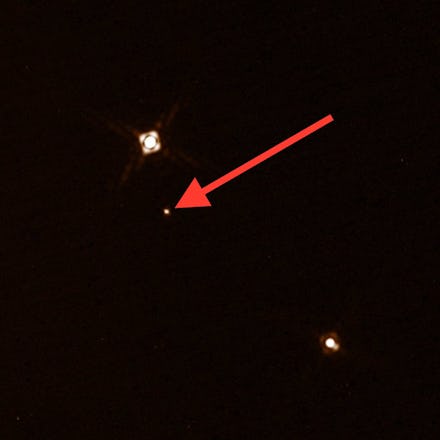Astronomers Captured a Massive Exoplanet With 3 Suns and a Super-Wide Orbit

We just got the first direct image on an exoplanet circling around a triple-star system.
The planet is the smallest dot, labeled HD 131399Ab, in the image below. The other dots show the three stars:
"HD 131399Ab is one of the few exoplanets that have been directly imaged, and it's the first one in such an interesting dynamical configuration," Daniel Apai, co-author on the new study, said in a statement.
What's it like on HD 131399Ab? If you were born on this bizarre world, you'd either spend your whole life in perpetual daylight, or your whole life with triple sunrises and sunsets every day. It would depend on what season you're born during. The planet has such a wide orbital path that its two seasons last much longer than the average human lifespan, according to the European Southern Observatory (ESO).
HD 131399Ab sits about 320 light-years from Earth; astronomers estimate it's about 16 million years old, making it one of the youngest exoplanets ever discovered, according to ESO.
Scientists were able to capture the direct image by using the SPHERE instrument on the Very Large Telescope in Chile. SPHERE, which stands for Spectro-Polarimetric High-Contrast Exoplanet Research, uses infrared light to seek out the heat signatures of planets while blocking out the glaring light from any surrounding stars.
HD 131399Ab has an unusually wide orbit, and it could help astronomers learn more about the wide variety of planet systems in the universe.
"It is not clear how this planet ended up on its wide orbit in this extreme system, and we can't say yet what this means for our broader understanding of the types of planetary systems, but it shows that there is more variety out there than many would have deemed possible," Kevin Wagner, lead author, said in the statement.
Read more: